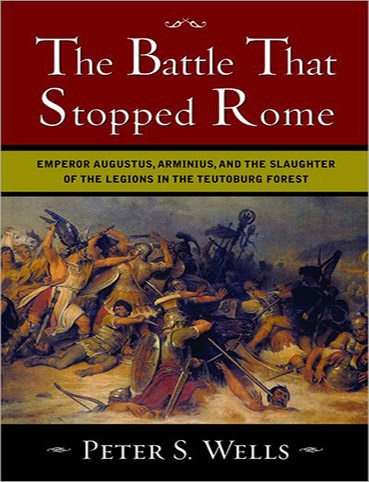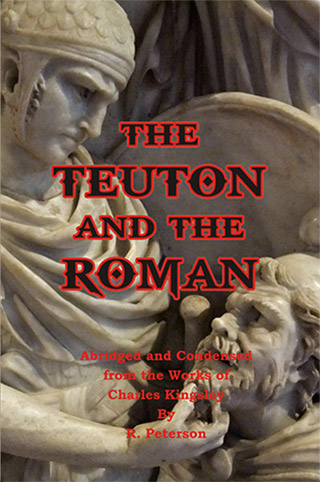Description
The complete history of the white race, spanning 350 centuries of tumultuous events. This is a story–of vast visions, empires, achievements, triumphs, reckless blunders, crushing defeats, and stupendous struggles.
Most importantly, revealed in this work is the one true cause of the rise and fall of the world’s greatest empires – that all civilizations rise and fall according to their racial homogeneity and nothing else–a nation can survive wars, defeats, natural catastrophes, but not racial dissolution.
The Prometheus Edition of March of the Titans has been completely rewritten, expanded, and updated. It is printed in full color throughout.
The expanded text—with every chapter having been fully rewritten and updated, and with many new chapters added as additional archaeological discoveries and facts have emerged—has now been divided into four separate volumes, each addressing a specific era.
Volume I includes the latest archaeogenetic evidence on the origin of the white race and concludes with the fall of the Roman Empire. This volume alone contains 581 full-color illustrations.
It begins with three brand new chapters that reveal: (1) how modern science has conclusively proven that race is determined by genetics alone, (2) how race influences the rise and fall of civilizations, and (3) the precise archaeogenetic origins of the white race.
Utilizing the most recent archaeological evidence, it offers a comprehensive overview of prehistory, including the Upper Paleolithic and Neolithic Ages.
It then thoroughly examines the Old European civilizations in Europe, presenting new archaeogenetic and archaeological evidence that elucidates their racial origins and notable achievements.
The subsequent section reviews the Indo-European Invasions of Europe and the Middle East/Far East, accompanied by new genetic evidence that traces the migrations of these peoples from their homeland above the Black Sea to the farthest corners of Europe—and even to present-day China.
Following this, the edition thoroughly examines the fate of the Indo-Europeans in the Middle East, presenting irrefutable DNA evidence and detailing how this affects the current racial composition of that region.
Ancient Egypt is then explored, starting with groundbreaking archaeogenetic findings that clearly show the founders of Ancient Egypt were a white population. This civilization later declined after becoming genetically diverse due to a significant influx of Semitic and African peoples. The full-color illustrations in this detailed and chronologically organized chapter highlight the racial transition in Egyptian society.
The narrative then shifts to Classical Greece. Leveraging the latest archaeogenetic evidence, this section reveals the racial origins of the prominent Grecian civilization, the Mycenaeans. Furthermore, it explains how the Classical Grecian civilization emerged and eventually declined due to racial fatigue from constant warfare and the substantial importation of racially alien slaves.
Next, the period of Macedonian dominance over Greece, initiated by King Philip II, and later, over the entire Middle East by his son, Alexander the Great, is detailed. This expanded section reinforces the multi-racial composition of Alexander’s Empire and elaborates on its fragmentation into rival factions following his passing.
The subsequent sections cover the Roman Republic era, the Roman Empire, its bifurcation into Eastern and Western domains, and the collapse of both segments in various new and augmented chapters.
Additional chapters discuss Roman civilization and culture; the transitions led by Julius Caesar and Octavian Augustus from the Roman Republic to the Roman Empire; and a pivotal new chapter on Rome and the onset of Christianity.
There are also considerable enhancements to the chapters on Rome’s interactions with the Celts, Germans, and the Middle East—with the later ringing the racial death-knell for the Empire.
The narrative then moves to the first significant non-white invasion of Europe, detailed in a revised chapter on the Hun invasions and their atrocities in Europe, which occurred a few decades prior to the Western Roman Empire’s fall.
The chapter titled “Death through Diversity: The Fall of Rome” stands out in Volume I. New and compelling archaeogenetic evidence illustrates how racial diversity precipitated the Roman Empire’s downfall, evidenced by the doubling of Y and mtDNA haplogroups from the Republic’s inception to Rome’s fall.
In addition, the archaeogenetic and archaeological evidence shows that just before the Western Roman Empire’s collapse, a staggering 80% of Rome’s inhabitants were of Middle Eastern racial origin.
To conclude, an enlarged section on the Eastern Roman, or Byzantine Empire, narrates its history until its fall in 1453. A remarkable addition to this section is an archaeogenetic study that unveils the Byzantine Empire’s racial composition, which mirrored the racial demographic shift in Rome during the Western Empire’s final days to that of a minority white population.
Contents of Volume I:
Foreword
Chapter 1: Race, Ethnicity and Culture
Chapter 2: Race—Why Civilizations Rise and Fall
Chapter 3: The White Race—Origins and Definition
Chapter 4: First Stirrings—the Upper Paleolithic Age
Chapter 5: A Giant Leap Forward—the Neolithic Age
Chapter 6: Laying the Foundations—The Old European Civilizations
Chapter 7: Born of the Black Sea—The Indo-European Invasions of the West
Chapter 8: Born of the Black Sea—The Indo-European Invasions of the East
Chapter 9: Inexorably Overwhelmed—Whites in the Middle East
Chapter 10: Nordic-Led Desert Empire—Ancient Egypt
Chapter 11: Genesis of Western Thought—Classical Greece
Chapter 12: Reshaping the Known World—Macedon and Alexander
Chapter 13: Senatus Populusque Romanus (SPQR)— The Roman Republic
Chapter 14: Crossing the Rubicon—Caesar, Octavian, and the End of the Roman Republic
Chapter 15: Imperium Romanum—The Roman Empire 27 BC–476 AD
Chapter 16: Power and Purpose—the Glory of Rome
Chapter 17: Bello Gallico—The Celts and Rome
Chapter 18: Germania Magna—The Germans and Rome
Chapter 19: Racial Cauldron—Rome, Africa, and the Middle East
Chapter 20: In Hoc Signo Vinces—Rome and Christianity
Chapter 21: The First Great Race War—Attila the Hun
Chapter 22: Death Through Diversity—The Fall of the Western Roman Empire
Chapter 23: Eastern Remnant—The Byzantine Empire
Index
308 pages, hardcover. Full color throughout.
8.5 x 11 inches (216 x 280 mm)


